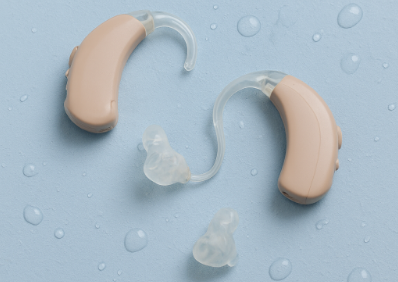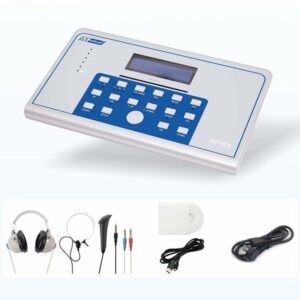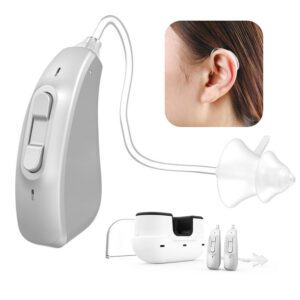hearing Aids are essential devices that help millions of people communicate and stay connected with the world. However, like most electronic devices, they are vulnerable to moisture. Accidental exposure to water—whether from sweat, rain, or bathroom humidity—can damage your hearing aids if not addressed promptly. This guide will walk you through what to do if your hearing aids get wet, how to dry them safely, and how to prevent future damage.

Immediate Steps When Hearing Aids Get Wet
When your hearing aids get wet, acting quickly is crucial:
Turn off the hearing aids immediately
Powering off prevents short circuits and reduces the risk of further damage.
Remove batteries or power source
Take out disposable batteries or disconnect rechargeable ones. This helps prevent electrical issues.
Gently wipe off external moisture
Use a clean, soft cloth or tissue to remove visible water. Avoid using excessive force or pressing buttons during this step.
Methods to Dry Hearing Aids
Air Drying
Place your hearing aids in a dry, well-ventilated area. Avoid direct sunlight or high heat sources, as extreme temperatures can damage the device components.
Using a hearing Aid Drying Box
Modern drying boxes provide an effective way to remove moisture. Many devices combine UV sterilization with intelligent drying, ensuring your hearing aids stay dry and hygienic. This method is faster and more thorough than air drying alone.
Desiccant or Silica Gel Packets
Another option is placing the hearing aids in a sealed container with silica gel packets. The desiccant absorbs moisture and speeds up the drying process, especially for internal components.
What Not to Do
Avoid using a hairdryer or high heat: Excessive heat can warp the casing or damage internal circuits.
Never use a microwave or oven: This will destroy your hearing aids completely.
Do not shake or disassemble the device: Internal components are delicate, and improper handling can cause permanent damage.
Checking Functionality After Drying
Once your hearing aids have dried:
Reinsert the batteries and turn them on.
Check the volume and sound quality for any irregularities, such as distortion or intermittent sound.
If the hearing aid does not function correctly, consult a professional technician immediately.
Preventive Tips to Avoid Moisture Damage
Use protective covers or sleeves for extra moisture resistance.
Avoid wearing hearing aids in bathrooms, swimming pools, or in heavy rain.
Store them in a drying box each night to prevent moisture buildup.
Clean and maintain your hearing aids regularly to reduce the risk of water-related damage.
When to Contact a Professional
Even after drying, some issues may require professional attention:
If the hearing aids remain unresponsive or produce abnormal sounds.
If internal components appear damaged.
For repairs covered under warranty or professional maintenance advice.
Conclusion
If your hearing aids get wet, remember the essential steps: turn off the device, remove the batteries, gently wipe off moisture, and use a drying method like a hearing aid dry box or desiccant. Being proactive and cautious can save your hearing aids from permanent damage. Most importantly, adopt preventive habits and seek professional help whenever necessary to keep your hearing aids functioning optimally.


